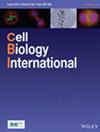SERP1 Alleviates Cerebral Ischemia/Reperfusion Injury by Inhibiting ER Stress-Mediated Apoptosis
Abstract
Ischemic stroke is a common disease of the central nervous system, and endoplasmic reticulum (ER) stress-induced apoptosis plays a key role in brain damage following ischemic stroke. Stress-associated endoplasmic reticulum protein 1 (SERP1) is a Sec. 61-associated polypeptide induced by ER stress, which is implicated in stabilizing membrane proteins during ER stress. However, the precise molecular mechanism of SERP1 in ischemic stroke is still unknown. This study aimed to explore the protective effect of SERP1 against cerebral ischemia/reperfusion (I/R) injury. Male Sprague-Dawley rats with transient middle cerebral artery occlusion/reperfusion (tMCAO/R) were used to simulate cerebral I/R injury in vivo. To mimic the cerebral I/R injury in vitro, PC12 cells were treated with oxygen glucose deprivation/reperfusion (OGD/R). The results revealed that the SERP1 expression was increased during cerebral I/R injury in vivo and in vitro. SERP1 knockdown promoted apoptosis and ER stress as well as aggravated I/R-induced brain injury in rats with tMCAO/R, but SERP1 overexpression presented the opposite effects. SERP1 also alleviated OGD/R-induced cell damage in PC12 cells. Mechanically, SERP1 inhibited the ER stress-induced neuronal apoptosis through the PERK-EIF2α-ATF4-CHOP pathway. In conclusion, these results suggest that SERP1 may be a novel candidate gene for therapies against cerebral I/R injury.

 求助内容:
求助内容: 应助结果提醒方式:
应助结果提醒方式:


